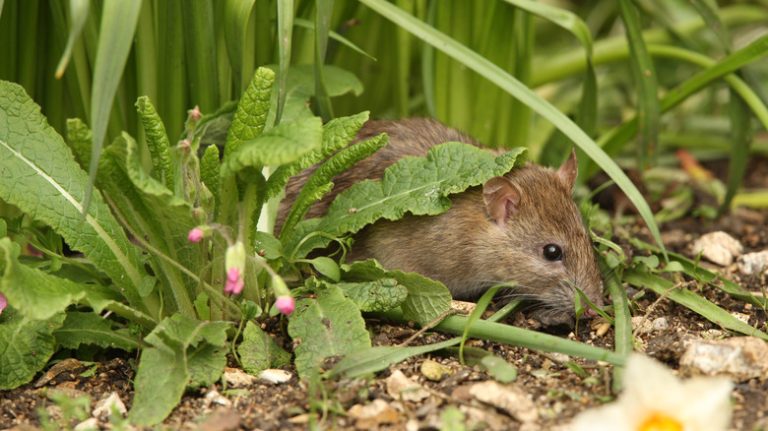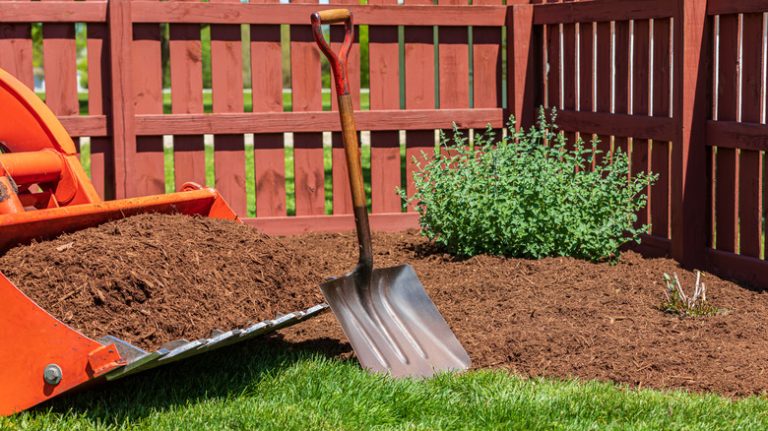One of the many joys of home design is landscaping your front yard. Not only does the front garden create the bulk of your curb appeal, but when done correctly, it can leave a lasting impression on guests. However, this can all go sideways if you don’t create a cohesive look. Of course, there’s a plethora of garden styling options that either lean towards maximizing the space or creating better harmony. If you start to randomly buy plants and put them wherever there is open space, the final result will look like a hodgepodge that lacks unity.
To avoid that, there are certain design tricks and theories you can keep in mind to create a more cohesive layout. From using repetition to create harmony or utilizing color theory to create matching designs, you have options. The goal for your front garden should be an aesthetically pleasing landscape that starts conversations and adds functionality to your home. Here are a few tips to create a cohesive garden aesthetic that meets your needs.
Mixing and matching
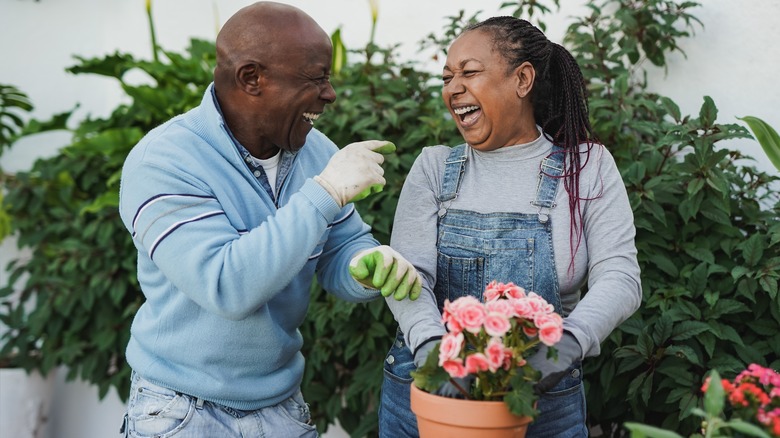
Mixing and matching plants will bring more balance and personality to your front yard. By adding centerpieces and contrasting plants, your flower picks will add a unique touch to your home. Be sure to focus on the plants complementing each other without overpowering the garden’s look. It’s easy to add several vibrant plants without considering how much they might clash. When plants clash, your yard will start to look too heavy and overwhelm passersby. To avoid this, couple plants that are harmonious opposites. This looks like pairing a feathery Juniper with a delicate shrub rose. Together, they add texture and colorful dimension to the garden.
Additionally, you’ll want to ensure the plant pairs grow well together. This is often referred to as companion planting. This method relies on you growing plants that mutually benefit each other while warding off pests. It improves plant health by getting rid of competition between plants, since they both require the same soil type, water amount, and fertilization. It also helps the plant absorb what it may need without disturbing the other. Since some plants require more sun and water than others, keeping companion planting in mind will narrow your search for the right plants.
Use repetition

While a lot of gardens have plants of varying colors, shapes, and sizes, it doesn’t mean you should shy away from repetition. In fact, your garden could benefit from it. Repetition of particular plants creates intentional harmony that draws the eye in. It creates structure and makes the design feel deliberate and planned out.
While you can create repetition by using the same shrubs or perennials throughout strategic points in your design, you can also create it by combining similar shapes and colors throughout the garden. This can look like using different rounded shrubs in select areas, varying feathery ornamental grasses in key spots, or even using pots of the same color. You can even use other elements to complement your home and garden, such as choosing plants that match the color of your home. However, be sure to avoid using plants that are too similar in color and shape. When the plants are too similar, they fall flat, whereas if they’re too different or placed incorrectly, they clash. If you’re absolutely drawn to two very similar plants, compromise by adding a transitioning plant between them.
Create landscape edging
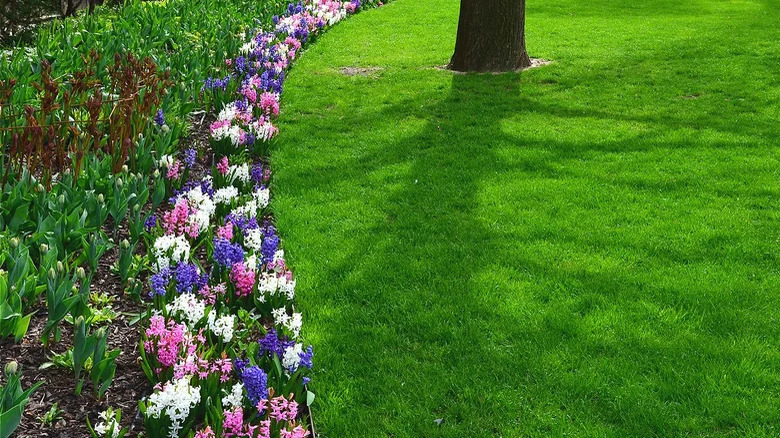
Beekeepx/Shutterstock
If you have planted a variety of annuals and perennials in your front yard but they don’t seem to mesh well, one easy way to create harmony is to create landscaping borders. You can do so by either planting a row of the exact same flowers or shrubs at the end of garden beds or alongside pathways — creating a type of dividing line — or by creating landscape edging. Landscape edging is when you either use pavers or metal borders to outline the ends of garden beds, mulched areas, or pathways. It makes the space feel more cohesive because it links hardscapes with softscapes, and also creates repetition throughout the front yard.
Rather than having a garden bed that just ends and blends in with your front lawn, you can have neatly arranged pavers that delineate the end of the design. This makes the landscaping feel more thought-out and intentional. It also helps create focal points since it carves out those elements from your front yard, helping to highlight each section. This makes it feel like it flows more, making the design appear more cohesive.
Use lines to create harmony
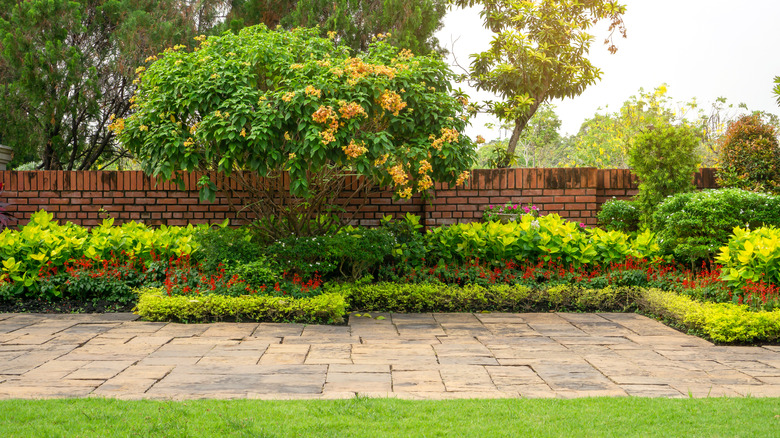
aimful/Shutterstock
Designing the front yard also requires a keen eye for lines. Using lines in your design helps lead the eye through the garden, highlighting what you want people to see and where you want them to go. There are four types of lines you can utilize in your designs, and you can mix and match them: straight, curved, vertical, and horizontal. Each helps create a sense of order and cohesion in your design. For example, flowers along the fence drag the eye horizontally, tall trees flanking the sides of the home bring the eye vertically, whereas distinct walkways bring attention to unique flowerbeds or foliage.
To stay cohesive, use lines to accentuate what your home already has. First, consider the design of your house. If it’s traditional and stately with boxy shapes, use straight lines in your landscaping to mimic that style. For example, you can create two parallel lines of shrubs flanking the walkway to the front door or plant neat horizontal rows of flowers against the face of the house. If your home has a more romantic style such as a Tudor home, you can copy the swoops and curves in the architecture with curvier flower beds or rounded bushes and tree canopies. Second, use lines to create symmetry in the space. Staggered rows of plants against a fence help create depth and order. A line of rounded bushes on either side of the front yard creates pleasing mirror images, and vertical trees carefully planted in empty nooks help balance the visual weight of the design.
Use color to create cohesion

Kali9/Getty Images
Being picky about color in your front garden is a great way to establish cohesion. Choose a color palette for your landscaping, and be sure that it repeats throughout the design. If you’re unsure how to narrow down your choices, pick a palette based on your home’s architecture. This will help create continuity between the face of the house and the front yard, making it feel more unified rather than disjointed. For example, if you have a Cape Cod-style house, pick blue and white flowers that mimic its classic design. If you have a cottage, choose feminine shades such as pink and orange to mirror its charm, and if you have a Georgian revival house, stick to green and white plants to copy its dignified appearance.
Alternatively, you can use color to create a particular vibe in the front yard, which would create a different kind of cohesion. For example, if you’re looking to bring warmth and drama, choose red, orange, and yellow plants like Orange Kings, lycoris, or Tuscan Suns. For a tranquil vibe, use cool colors like blue Balloon Flowers and purple asters. Just make sure to choose no more than two to three hues. This creates a clean, organized image rather than a hodgepodge of color. “Repetition of color is a useful device to unify the garden and pull together a theme. The most simple and effective way to do this is by choosing one or two dominant colors,” designer Alistair W Baldwin told Homes & Garden. Plant the pops of color in large chunks throughout the front yard, creating breathing room between them with plenty of green.
See how you can mimic your surrounding neighborhood
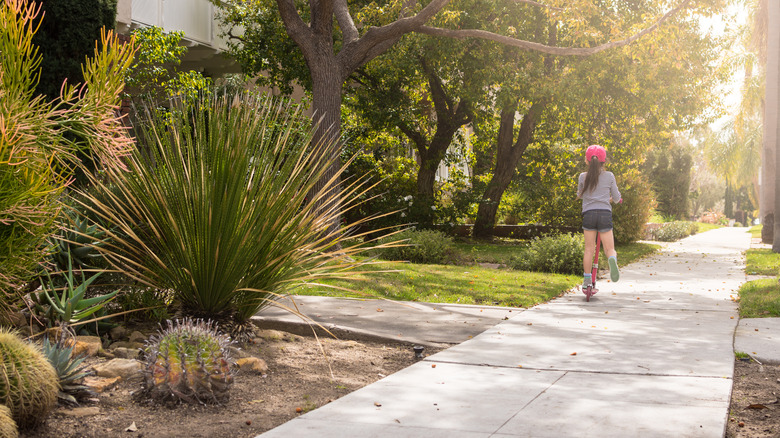
Bradleyhebdon/Getty Images
The goal for your front yard should always be to maintain a perfect balance between cohesion and individuality. That means you might want to take your cohesive game plan one step further and see how you can also help blend it into your neighborhood’s style. Take a look at your block and see if your neighbors have extensive designs, have opted for a more minimalist approach, or perhaps endorsed eco-friendly landscaping. If you like the style of your neighborhood, you can adopt that prevailing trend in your own front yard to create ultimate cohesion.
Alternatively, you can create cohesion with the natural landscape of your area by choosing to design with native plants. To begin, research which plants are native to your region, and choose several different elements such as flowers, decorative grasses, shrubs, and trees. This will allow you to create a curated look while also blending in with the natural landscape. Once you have your list of chosen plants, start small — rather than converting your entire front yard in one go, choose a corner or flower bed and convert that first. If you’re unsure how to group the native plants together, go to your local botanic gardens or visit an independent nursery for tips. They will share advice on how to group them together so your yard looks manicured rather than wildly grown. The end result will be a garden that echoes the surrounding native plantlife, creating ultimate cohesion.


